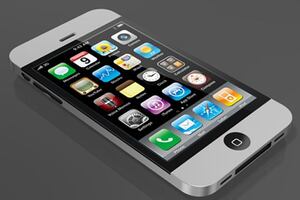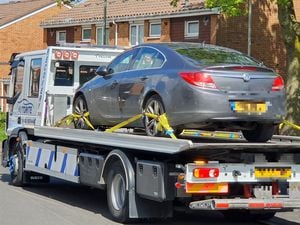iPhone 5: All You Need to Know
iPhone 5, the latest generation of Apple's mobile phone was unveiled last week and is officially released today, writes technology blogger Dr Thomas Hartley of the University of Wolverhampton.

In anticipation of the release we thought we'd take a look at some of the phones new features. According to the headlines Apple's iPhone 5 is thinner, lighter and faster than the iPhone 4S, but what's the real story?
Design
On the surface the design of the iPhone 5 is not radically different to its two predecessors. We still have the rectangular shape, large screen and the single home button on the front. Nevertheless, there are a number of design enhancements that improve the overall user experience.
The iPhone 4S had a glass front and back with a steal band around the outside. This looks nice; however, it isn't always practical. The glass back is very slippery, so your iPhone has a habit of sliding off things you put it on; furthermore, the glass collects smudged marks from your fingers.
The new iPhone 5 has an anodised aluminium back, so hopefully the number of accidental sliding incidents should be reduced. The iPhone 5 is also lighter and thinner. It weighs in at 112 grams and 7.6 mm. This makes it 20% lighter and 18% thinner than its predecessor.
Retina Display
The iPhone 5 features a 4-inch display that is longer but not any wider than the iPhone 4S. This means that the iPhone 5 has more screen space, but should be just as easy to hold in one hand. However, the extra length might mean you have to stretch to reach the apps on the top row and it may be trickier to get to the power button with just one hand.
The advantages of the longer display are that you now have an extra row of apps or folders (6 instead of 5). This should make apps easier to access. In addition, movies and video should now play with minimal or no black bars at the top and bottom of the screen. Finally, there is more space for apps to show their content. You will be able to see more of the web pages you visit, your calendar and inbox.
Camera and Lightning connector
The rear camera on the iPhone 5 is the same, but thinner 8 megapixel camera from the previous iPhone. It is a fine camera; however, some improvement would have been nice. The main enhancement to the camera comes in terms of software improvements, therefore they are also available on the iPhone 4S after an upgrade to iOS 6.
The new panorama feature lets you capture large sweeping vistas up to 240 degrees. This feature is super easy to use thanks to some intuitive software that allows you to take a momentous picture with one slow horizontal or vertical motion.
The iPhone's connector has been replaced with a much smaller connector called lightning. The main advantage of the connector is its decreased size and reversibility, which means you do not have to think about which way you need to plug in the cable. The main downside of the new adaptor is that your current accessories and cables for your iPhone 4S or earlier (e.g. car kits and speakers) will not work with the new phone unless you buy an adaptor from Apple. This is an extra expense that may be frustrating for some.
Performance and LTE/4G
The iPhone 5 sports the new custom designed A6 CPU, which offers app and graphics performance that is up to twice as fast as the previous A5. This should mean that the phone is smoother to navigate, apps load quicker and games look better.
The iPhone 5 also supports faster wireless performance via LTE. LTE stands for Long Term Evolution; however, to you and me it means 4G high speed internet on our mobile phones and other data devices.
LTE for the iPhone will initially be available in the UK from the operator EE (Everything Everywhere), who are a rebranded T-mobile and Orange. In the future three should offer support for LTE on the current iPhone 5; however, according to an article on engadget O2 and Vodafone will be not be able to support LTE on the current iPhone 5. This may change with future iPhone models.
The rollout of LTE in the UK will start with major cities, such as London, Birmingham and Cardiff, so you many not initially be able to take advantage of the higher speeds. LTE is a good feature; however, the rollout will take time and you may need to initially swap networks to take advantage of it. As with 3G and Wi-Fi, if you find the feature is draining your battery it may be worthwhile switching it off if you are not taking advantage of it.
You can see Apple's latest keynote on iOS 6 and iPhone 5 here.
Will you be upgrading your phone to the new iPhone 5?





